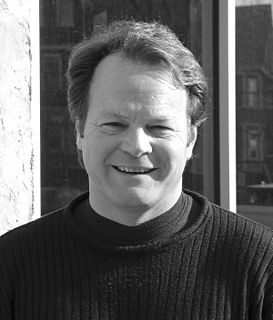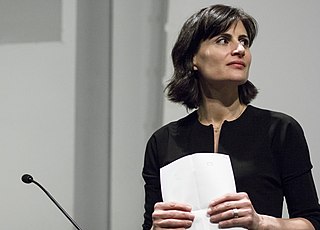
The American Institute of Architects (AIA) is a professional organization for architects in the United States. Headquartered in Washington, D.C., the AIA offers education, government advocacy, community redevelopment, and public outreach to support the architecture profession and improve its public image. The AIA also works with other members of the design and construction community to help coordinate the building industry.

Tom Kundig is an American architect and principal in the Seattle-based firm Olson Kundig Architects. He has won numerous professional honors.
DLR Group is an employee-owned integrated design firm providing architecture, engineering, planning, and interior design. Their brand promise is to elevate the human experience through design. A self-described advocate for sustainable design, the firm was an early adopter of the Architecture 2030 Challenge, and an initial signatory to the AIA 2030 Commitment and the China Accord.
KieranTimberlake is an American architecture firm founded by Stephen Kieran and James Timberlake in Philadelphia. The firm espouses a philosophy of sustainable design, collaborative design, and in-depth research. They have also shown an interest in prefabrication, new technologies and integrating architecture with the actual activities to take place in the buildings they design, especially using "teaching" design elements in schools. Their interest in productions and craft led them to team up with DuPont to develop Smartwrap, a laminated polymer film that can support thin interstitial films, including photovoltaics, OLEDs, polarizing or UV screens, etc.

Brooks + Scarpa is an American architectural firm based in Los Angeles, California, and Ft. Lauderdale, Florida, USA. Angela Brooks and Lawrence Scarpa are the recipients of the 2022 American Institute of Architect Gold Medal, the institute's highest honor. The firm was also chosen as the 2014 Smithsonian Cooper-Hewitt National Design Museum Award Winner in Architecture. In 2010 they were the recipient of the American Institute of Architects (AIA) Firm Award. Los Angeles projects completed by the firm include the Solar Umbrella home in Venice, California, the Orange Grove lofts in West Hollywood and the Colorado housing project in Santa Monica.
Machado Silvetti is an architecture and urban design firm headquartered in Boston, Massachusetts. Incorporated in 1985, the firm's principals Rodolfo Machado and Jorge Silvetti have been in association since 1974. They have been called "arguably Boston’s most influential firm of the last generation".
Chicago firm Nagle Hartray Architecture was founded in 1966. The firm's early reputation was grounded in single-family and multi-family housing. Recent and current projects reflect diversification of the former focus, emphasizing educational, spiritual, civic, and media communication programs. Nagle Hartray has received over 75 industry design awards to date. In 2017, the firm merged with Sheehan Partners to form Sheehan Nagle Hartray Architects.

Frederic David Schwartz was an American architect, author, and city planner whose work includes Empty Sky, the New Jersey 9-11 Memorial, which was dedicated in Liberty State Park on September 11, 2011, the tenth anniversary of the September 11 attacks.

Charles Rose is an American architect.
Caples Jefferson Architects is an American design and architecture firm founded in 1987 in New York City by principal architects Sara Caples and Everardo Jefferson. The firm focuses on architecture in a public, cultural & community context, and is unique for its dedication to designing approximately half of its projects in communities underserved by the design profession.
John Ronan is an American architect, designer and educator based in Chicago, in the United States. John Ronan FAIA is founding principal of John Ronan Architects in Chicago, founded in 1999.

The Mashantucket Pequot Museum and Research Center is a museum of Native American culture in Mashantucket, Connecticut, owned and operated by the Mashantucket Pequot Tribal Nation.

Thomas Phifer is an American architect based in New York City.
Bartholomew Voorsanger is an American architect.
David Burney is a public architect and educator. He was born in Liverpool, England and educated at Heriot-Watt University, Edinburgh and The Bartlett Faculty of the Built Environment of University College London (UCL). He is the Academic Coordinator of Urban Placemaking and Management at Pratt Institute and serves as a commissioner at the New York City Department of City Planning. He has lived in New York since 1982.

Simons Architects (SA) is a fifteen-person architecture, design, and planning firm located in Portland, Maine.

David E. Sellers is an American architect based in Vermont known for using an improvisational approach to modern architecture which eventually led to what is known as design/build.
Louise Braverman is a New York City-based architect known for a design philosophy that aims to combine aesthetic design and social conscience. She is a Fellow of the American Institute of Architects (FAIA).

Patricia Saldaña Natke is an American architect, the founding partner and president of UrbanWorks, Ltd., a Chicago-based architecture, interiors, and urban planning firm.

Amale Andraos is a New York-based designer. She was dean of the Columbia Graduate School of Architecture, Planning and Preservation (2014-2021) and serves as advisor to the Columbia Climate School. She is the co-founder of the New York City architecture firm WORKac with her husband, Dan Wood. Her impact on architectural practice around the world was recognized when she was named Honorary Fellow of the Royal Architectural Institute of Canada in 2021.














